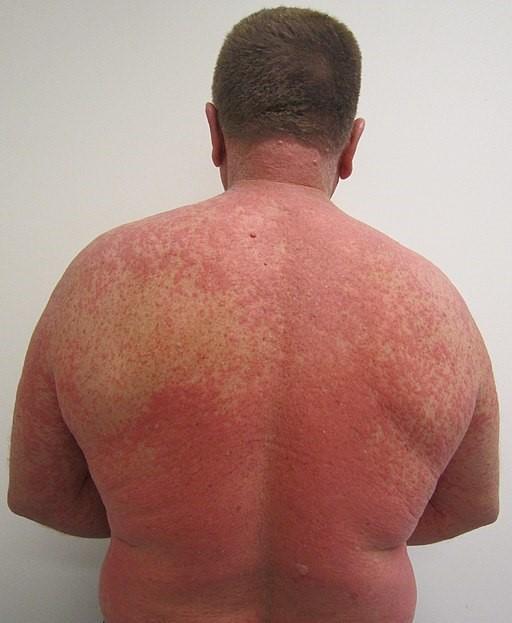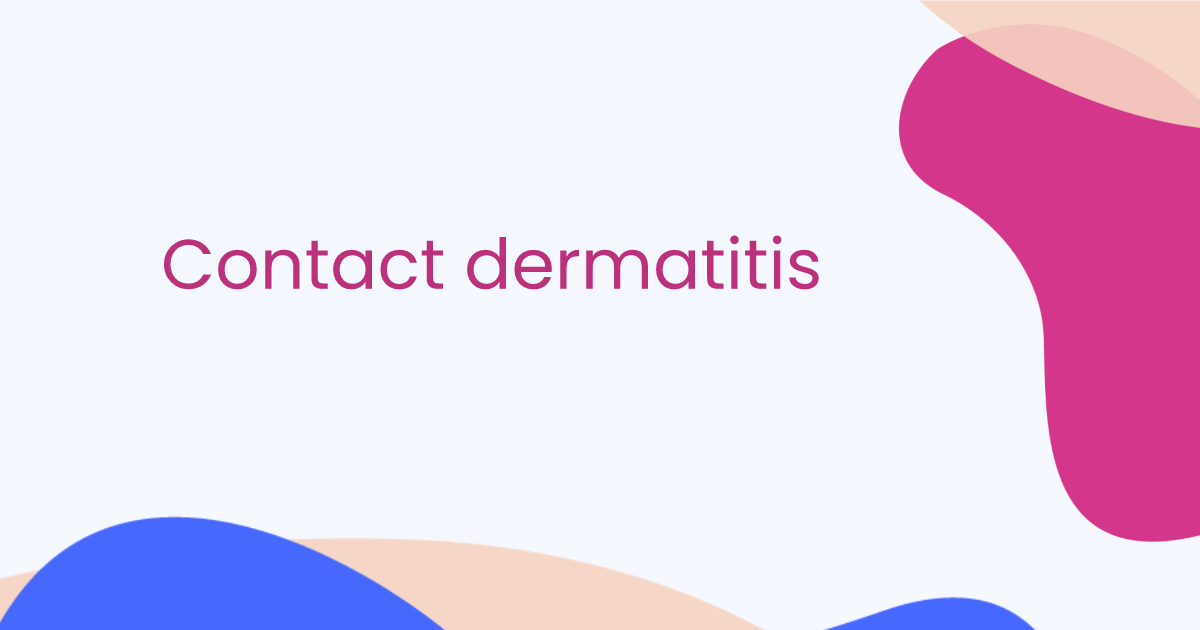Medikamentenallergie
Begutachtet von Dr. Colin Tidy, MRCGPZuletzt aktualisiert von Dr. Hayley Willacy, FRCGP Zuletzt aktualisiert am 20 Nov 2023
Erfüllt die Anforderungen des Patienten redaktionelle Richtlinien
- HerunterladenHerunterladen
- Teilen Sie
- Sprache
- Diskussion
In this series:AllergiesAnaphylaxisAngio-oedemaHouse dust mite and pet allergySkin prick allergy testAntihistamines
Medicines can cause allergic reactions. In this leaflet these reactions are called 'drug allergies'. In this instance the drugs referred to are medicines people take for their health. For example, antibiotics or anti-inflammatory painkillers rather than drugs of addiction.
Allergic reactions can happen with prescribed medicines as well as those you have bought from a pharmacy. Drug allergies may be mild, moderate or severe. Some can come on in a matter of minutes. Others may take days or even weeks to develop. Some reactions are so severe they can be life-threatening. Mild reactions can sometimes be treated simply by stopping the medicine. Severe reactions usually require hospital admission.
In diesem Artikel:
Lesen Sie unten weiter
What is a drug allergy?
An allergy is a response of the body's immune system to something called an allergen. In the case of drug allergy the allergen is a medication.
Most reactions that do not involve the immune system are side-effects rather than true drug allergies. The most common drug allergies are caused by anti-inflammatory painkillers - also called non-steroidal anti-inflammatory drugs (NSAIDs) - and by antibiotic medication.
About 1 in 10 people with asthma become wheezy when they take NSAIDs.
How common are drug allergies?
Tests on people who report drug allergies show that only a few have a true allergy. One study confirmed true allergy in only 1 in 10 people who thought they had an allergy to penicillin type medication.
Often they had a rash in childhood at the same time as taking penicillin and just assumed that the medicine was the cause.
Drug allergies do, however, seem to be on the increase. About 15% of people in the UK admitted to hospital have their stay extended because of an allergic drug reaction.
Lesen Sie unten weiter
What are the symptoms of a drug allergy?
Mild reactions
In a mild reaction you may develop itchy eyes or a runny nose. All sorts of skin rashes are possible. These include:
Acneform lesions - acne spots on the upper part of the body.
Acute generalised exanthematous pustulosis (AGEP) - the skin becomes red and is covered with small boils. You may develop a high temperature (fever).
Bullous pemphigoid - the skin is covered with blisters filled with clear fluid.
Erythema nodosum - red rounded lumps (nodules), which are tender, form just below the skin's surface. They commonly occur on the shins.
Erythroderma - this causes general redness of the skin.
Fixed drug eruption - this is a rash which comes up on the same area of the skin (hence 'fixed') whenever the same drug is given. The rash can take various forms but commonly looks like measles or larger red blotches on the skin. It frequently occurs on the hands, feet or genitals.
Drug Reaction

James Heilman, MD, CC BY-SA 4.0, über Wikimedia Commons
Hypersensitivity syndromes - this is also known as 'drug reaction with eosinophilia and systemic signs' (DRESS). The skin rash is accompanied by other features such as fever, swollen glands and a rise in the number of white cells in the blood, called eosinophils. The rash is made of small, itchy red bumps (papules) commonly seen on the face, arms, legs and trunk.
Lichenoid reactions - this is so called because it looks like a condition called lichen planus. The rash is made of small, red-purple bumps. The bumps are usually shiny and flat-topped (planus means flat). They vary in size from a pinhead to about 1 cm across. The number of flat-topped bumps that develop varies. The rash can appear anywhere on the body but is most likely to occur on the inner wrists, lower legs and lower back.
Lupus drug reactions - this may cause small purple spots like bruises (purpura) on the skin, with or without erythema nodosum.
Photosensitivity - some medicines make the skin more sensitive to sunburn.
Urticaria - this takes the form of itchy raised weals (also known as 'hives') on the skin. formed by tiny amounts of fluid that leak from blood vessels just under the skin's surface.
Vasculitis - this means inflammation of the blood vessels. It can take various forms but nearly always affects the skin of the legs. Bruises of various sizes, ulcers and patches of redness are common findings.
Severe reactions
Most allergies are mild and clear up once the medicine is stopped. However, severe reactions can occasionally occur.
Anaphylaxis is an extreme form of allergic reaction. It can cause:
Swelling of the lips and tongue.
Atemprobleme.
Einsturz.
Verlust des Bewusstseins.
For further information, see separate leaflets called Anaphylaxis and Dealing with an Allergic Reaction.
Two severe reactions which can develop are called Stevens-Johnson syndrome and toxic epidermal necrolysis. Whilst there are some differences in the features of these two conditions, toxic epidermal necrolysis can be considered a more widespread form of Stevens-Johnson syndrome.
The first symptoms may include:
Fieber.
Halsentzündung.
Gelenkbeschwerden.
Juckreiz.
Sickness.
Diarrhöe.
Soreness of the eyes, the inside of the mouth, the throat, the nostrils and the genitals.
Difficulty eating and drinking.
Burning sensation when you pass urine.
Ausschlag.
A rash develops, usually on the face or trunk, which spreads to large areas of the body. It starts with flat red spots, which turn into raised bumps.
If you have Stevens-Johnson syndrome you might notice some spots develop small blisters in the centre to give the typical appearance of 'target lesions'. Blisters can run together to form large fluid-filled areas known as bullae.
In toxic dermatolysis, blistering can become very severe and lead to large areas of skin peeling off.
What causes a drug allergy?
An allergy is the response produced by the body's immune system to an allergen. The body recognises that something that does not come from itself and attacks it (even though it is usually harmless). It is actually a defence mechanism but the response may be more of a problem than the substance that caused it. An allergen can be caused by many things, such as pollen (which causes hay fever). In this case. the allergen is drugs - medication. This can be prescribed medicines, or those bought over the counter.
The mechanism of action is either through a Type 1 IgE-mediated (a type of immunoglobulin) hypersensitivity, or through a Type 4 T-cell (a type of white blood cell) mediated reaction.
Lesen Sie unten weiter
What drugs are commonly linked to allergies?
Aspirin or non-steroidal anti-inflammatory medicines.
Penicillin type antibiotics.
Anaesthetics.
Impfstoffe.
Substances injected when having some types of x-ray procedures.
It is important to distinguish a side-effect to a medication from a true allergy. Sometimes the symptoms may be similar.
How is drug allergy diagnosed?
It is usually easy to make the link between the offending medicine and the resulting reaction. If the symptoms clear up when the medicine is stopped this is often enough to confirm a drug allergy.
However, if the reaction is severe, you may need blood and urine tests to check that your liver, kidneys and other bodily functions are working properly. A chest X-ray may be required if your lungs are involved.
If it is not certain that your symptoms are due to a particular medicine, you may need to be given a small amount of the drug, either by mouth, injection or as a skin patch. Then your reactions are monitored under medical supervision.
How is drug allergy treated?
In most cases, stopping the medicine is enough. Sometimes, complications may require treatment such as steroid or antihistamine tablets.
If you have a drug allergy it is important to carry a card, a medical emergency identification bracelet or equivalent, or a letter from your doctor giving details of the allergy.
Does drug allergy get better?
Most people with drug allergy recover very quickly once the medication is stopped, although the rash can take 10-14 days to fade. People with severe reactions may take a long time to get better, especially if they are elderly or have other medical conditions.
Toxic epidermal necrolysis can be life-threatening in up to half the cases. The less severe Stevens-Johnson syndrome can still be life-threatening for about a tenth of people developing the condition.
Patient wählt aus für Andere Allergien

Allergien, Blut und Immunsystem
Kontaktdermatitis
Kontaktdermatitis ist ein Hautausschlag, der durch eine Reaktion der Haut auf eine Substanz verursacht wird, mit der sie in Kontakt gekommen ist. Möglicherweise müssen Sie einen Patch-Test durchführen, um die verursachende Substanz zu identifizieren. Eine Steroidcreme oder -salbe lässt den Ausschlag normalerweise verschwinden. Die langfristige Behandlung besteht jedoch darin, den Kontakt mit der verursachenden Substanz zu vermeiden.
von Dr. Hayley Willacy, FRCGP

Allergien, Blut und Immunsystem
Heuschnupfen
Heuschnupfen wird durch eine Allergie gegen Pollen verursacht. Häufige Heuschnupfensymptome sind eine laufende, juckende und/oder verstopfte Nase, Niesen und juckende Augen. Übliche Behandlungen sind ein Antihistamin-Nasenspray oder -Medikament und/oder ein Steroid-Nasenspray. Andere Behandlungen werden manchmal eingesetzt, wenn diese üblichen Behandlungen nicht so gut anschlagen.
von Dr. Doug McKechnie, MRCGP
Weiterführende Literatur und Referenzen
- Medikamentenallergie: Diagnose und Behandlung von Medikamentenallergien bei Erwachsenen, Kindern und jungen MenschenNICE Klinische Leitlinie (September 2014; aktualisiert November 2018).
- Allergie UK
- BSACI-Leitlinien/Standards of CareBritische Gesellschaft für Allergie und klinische Immunologie
- Patterson RA, Stankewicz HA; Penicillin Allergy.
Lesen Sie unten weiter
Artikel Geschichte
Die Informationen auf dieser Seite wurden von qualifizierten Klinikern verfasst und von Fachleuten geprüft.
Nächste Überprüfung fällig: 18. November 2028
20 Nov 2023 | Neueste Version

Fragen, teilen, verbinden.
Stöbern Sie in Diskussionen, stellen Sie Fragen, und tauschen Sie Erfahrungen zu Hunderten von Gesundheitsthemen aus.

Fühlen Sie sich unwohl?
Beurteilen Sie Ihre Symptome online und kostenlos
Sign up to the Patient newsletter
Your weekly dose of clear, trustworthy health advice - written to help you feel informed, confident and in control.
By subscribing you accept our Privacy Policy. You can unsubscribe at any time. We never sell your data.